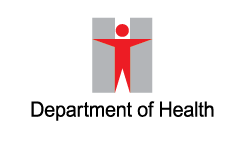Myiasis
Myiasis is the infestation of tissues of humans or vertebrate animals by fly larvae (maggots). Elderly people who are bedbound, have physical disability or lack self-care ability are more vulnerable to fly invasion of their body parts not protected by skin, such as wounds and mucous membranes, and hence, infestation by the larvae.
Causative agent
Many types of flies can cause myiasis in humans or animals, such as Oestridae, Calliphoridae and Sarcophagidae. In Hong Kong, Chrysomya bezziana of the family Calliphoridae is one of the commonest species that causes human myiasis.
Development of disease
The life cycle of Chrysomya bezziana comprises four stages, from egg, larva, pupa and then to adult. An adult female fly only lays eggs on live animals, including warm-blooded animals and human. The sites of larvae infestation are usually on superficial wounds, mucous membranes of body orifices such as the mouth, ear and nose of debilitated individuals. The eggs usually hatch within 24 hours, and the larvae burrow into the host's tissue and feed on the host's blood as well as dead or living tissue. Myiasis is not spread from person to person.
Clinical features
Feeding activity of the larvae involving penetration of the host’s body may cause serious tissue damage, resulting in injury to the skin, secondary bacterial invasion, loss of organ function and death. Injury to the skin would often be accompanied by putrid smelling discharge and ulceration.
Prevention
To prevent myiasis, members of the public (especially caretakers of susceptible persons and staff of elderly homes) are advised to observe the following measures:
- Maintain good personal hygiene
- Bathe daily and keep skin clean.
- Maintain good oral hygiene.
- Proper wound management
- Fluid and blood from wounds will attract Chrysomya bezziana. Therefore, all wounds should be treated and dressed properly. Wash hands before and after touching wounds.
- Wounds should be assessed regularly. Dressings should be kept clean and dry to avoid attracting Chrysomya bezziana.
- Seek medical attention should the wound shows symptoms of infection like bleeding, putrid discharge or pus.
- Maintain good environmental hygiene and good ventilation
- Keep premises clean.
- Store food in refrigerator or cover the food with screen.
- Refuse should be kept in containers with tight-fitting lids and disposed of regularly.
- Dead bodies of animals should be disposed of properly.
- Fly-proof measures
- Prevent breeding of flies through installation of fly-proof measures, such as fly screening, bed net, anti-fly curtain, insect electrocuting device or fly trap.
- Keeping of pet
- Pets, particularly dogs and cats, have to be examined by veterinary surgeons regularly.
- All wounds on animals should be treated immediately and properly.
- Animals with suspected myiasis should be brought to the attention of veterinarians.
- Do not feed stray animals or keep them as pet.
Staff of elderly homes should ensure good environmental hygiene, be alert to residents developing symptoms of the disease and seek medical consultation promptly for residents feeling unwell.
For further information on fly prevention and control, please visit the website of the Food and Environmental Hygiene Department at: https://www.fehd.gov.hk/english/pestcontrol/arthropod-pests-leading.html
















